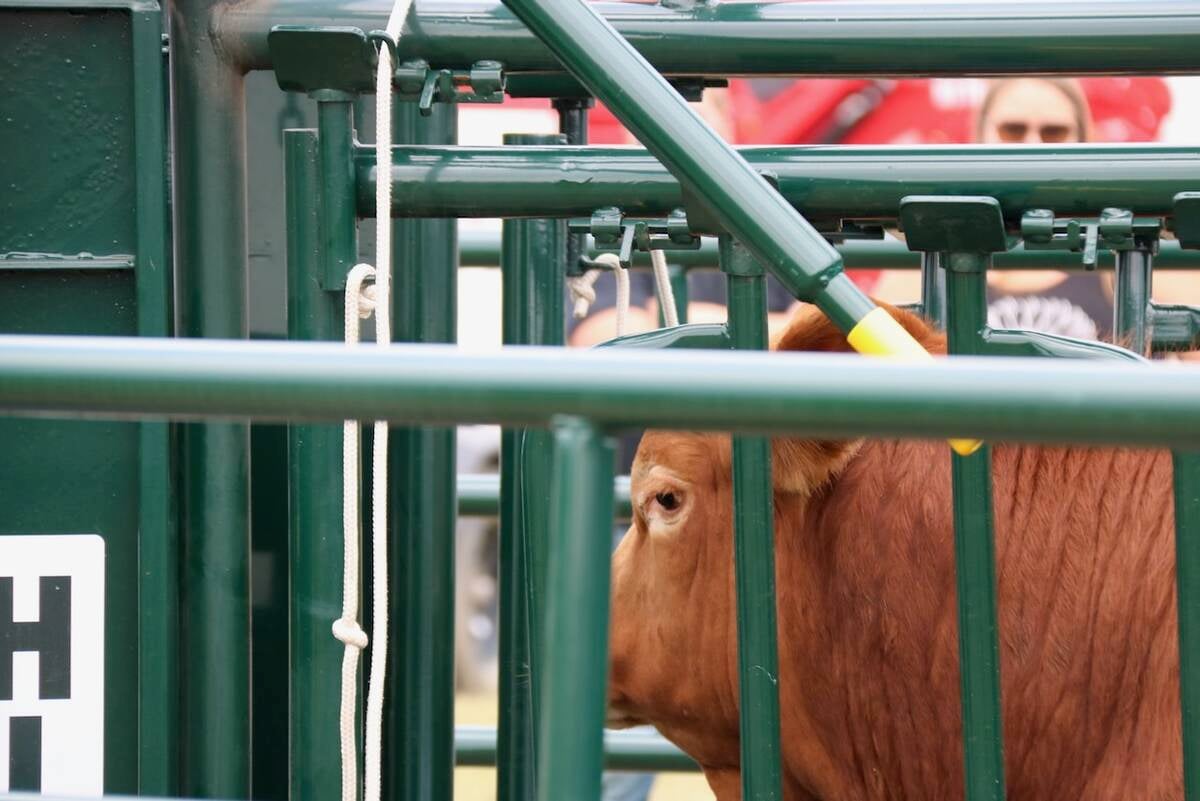CLARESHOLM, Alta. – They faced skepticism over creating crossbred bulls and accusations that they were creating mongrels, but after 30 years, the breeders of Beefbooster cattle are alive and kicking.
“We’re on a journey,” said John Stewart-Smith, president of the Beefbooster company and one of the founders of the composite cattle that originated on the ranges of Alberta.
“With crossbreeding, you’re actually making the gene pool wider,” he said. “It’s when you’re inbreeding that you get the problems.”
Today, Beefbooster is a registered trademark. The company employs a full-time geneticist and there are more than 500,000 records available on animal performance.
Read Also

Good handling equipment a must on cattle operations
It’s important for the safety of producers and everyone else dealing with their stock that handling equipment is functional and safe.
A farmer from Tanzania, Stewart-Smith had considerable success crossbreeding Hereford and Angus with African cattle.
He and his family immigrated to Canada in 1967 with little money and few prospects. He eventually became general manager of the newly founded Alberta Cattle Commission in the early 1970s.
The exotic boom was well under way by then with imports of big, blocky-framed cattle. Crossing European bulls with Canadian stock was a natural fit.
Cattle producers have long known that hybrid vigor provides growth, fertility and higher milk production.
A group of like-minded cattle producers, including Neil Harvie and Marshall Copithorne of Cochrane, Alta., as well as geneticist Roy Berg from the University of Alberta, wanted performance over politics. Their ideas about composite cattle eventually came together to develop Beefbooster.
The program got under way on a ranch near Cochrane that was managed by Stewart-Smith.
Using artificial insemination from 24 different breeds, the ranch ended up with five lines that contain anywhere from three to six breeds. A dairy breed was allocated to each strain to ensure adequate milk production.
No strain contains the same breeds.
“All the business about pedigrees and breeds, we just threw out the window,” he said.
“We found out if you draw bell curves for whatever trait you want, there is always a spread.”
Producers know that within a strain there could be a 14 to16 pound spread in birthweight. This depends on whether the calf’s dam was a heifer or a mature cow.
Each Beefbooster strain has a different purpose.
There are three maternal strains that produce a moderate, deep-bodied cow.
The M1 is derived from an Angus cross program. The second, M2, came from Hereford breeding, while M4s are for breeding commercial cows with an Angus, Hereford or Simmental base.
The M3 bull is a smaller animal used for breeding heifers. Its background contains Jersey, Shorthorn and Longhorn.
The TX is a terminal sire strain for fast-growing feeders destined for slaughter. That strain includes Maine Anjou, Charolais and Chianina.
There are 19 herds offering the various strains of Beefbooster bulls. All are licensed breeders and shareholders in the company.
For Charlie Ewing, chair of the Beefbooster board, crossbreeding is sensible.
Former Limousin breeders, he and his father Sherm Ewing got involved with Beefbooster in 1979.
His father was involved with a crossbred program known as Hi-Tester.
Ewing raises M4 bulls on his Claresholm ranch. Besides the maternal M4s, he buys M3s to breed heifers, which throw a 70-pound calf compared to a 90 lb. calf from the larger line.
He keeps about 500 bred cows and retains about 80 percent of the heifers to maintain herd size. Steers are kept and custom fed.
Each fall he sends 130 to 150 bulls to the test station at Cattleland, near Strathmore, Alta.
They are screened for such qualities as sound feet and legs, scrotal circumference and good disposition.
About 70 percent make the grade. In addition, Ewing brings home about seven new bulls each year from other breeders to strengthen his herd.
His target customer has a cowherd of about 200 head, because that number provides a sizeable amount of farm income. Trouble-free cattle are a necessity for these buyers.
“We try to give the customer exactly what we say we are giving them,” Ewing said.
Each buyer gets a certificate of performance listing birthweight, weaning weight, average daily gain, back fat and scrotal circumference. The dam’s age, its index and an identification number are also added.
Sales are based on each animal’s breeding value as determined by the company’s multi-trait economically weighed value indicator. It is a formula-based system based on fall calf prices. It tends to follow the beef price cycle.
The potential buyer’s name is entered in a draw, allowing him to choose a bull according to his order in the draw.
Beefbooster has sold bulls to Ontario, Manitoba, Saskatchewan, Wyoming, Montana, Alberta and British Columbia.
Color does not matter and in Ewing’s herd most are red with a few buckskins and some black and whites.
Cows are culled if they have bad feet and lameness, are open, or are old.
“Technically, there is no such thing as a Beefbooster cow,” said Ewing. People tend to select on the basis of size, which is not necessarily the prime indicator of quality.
“If you tried to eyeball out which was my best cow, you probably wouldn’t pick her,” he said. “She would probably be a medium-type cow.”
As part of his agreement with the program, all calves are weighed at birth and color coded to differentiate each strain.
For instance, a green ear tag means the calf came from a heifer and was sired by an M3 bull. A yellow tag means the calf was from a cow bred to an M4 bull.















